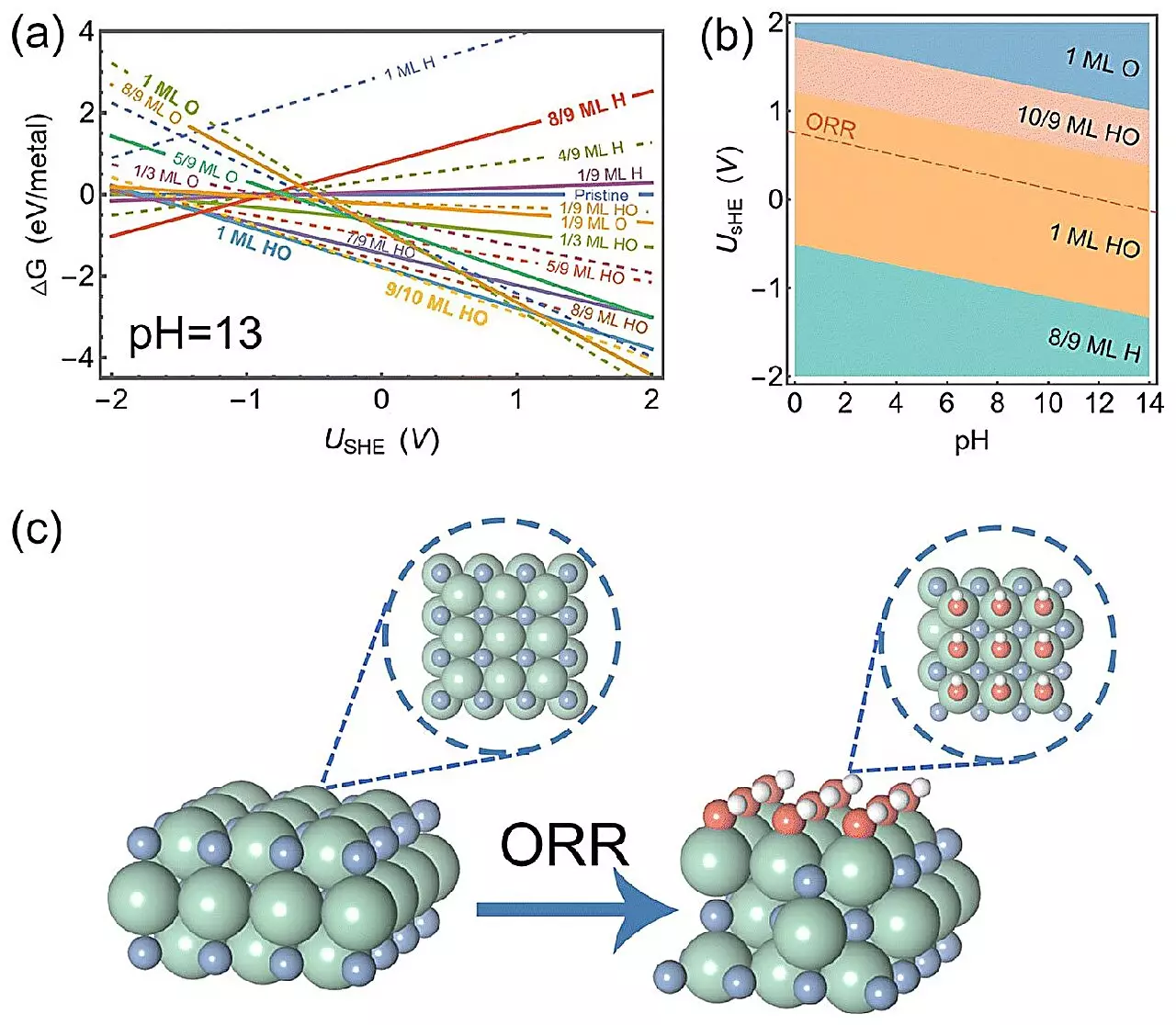Researchers have made a significant breakthrough in understanding the properties of zirconium nitride (ZrN), a material that holds promise in powering clean energy reactions. This discovery has the potential to revolutionize the design of transition metal nitrides and pave the way for the generation of cleaner energy. The study, featured as the front cover article in the prestigious journal Chemical Science on July 26, 2023, sheds light on the remarkable capabilities of ZrN and its potential applications in the field of clean energy.
Anion exchange membrane fuel cells (AEMFC) are devices that utilize the chemical reactions between hydrogen and oxygen to produce clean electricity. These devices are capable of operating in alkaline conditions, providing an ideal environment for catalysts that can generate efficient and cost-effective reactions. ZrN has shown promising results in recent studies, surpassing even platinum in terms of performance when utilized for the oxygen reduction reaction (ORR) in alkaline media. While ZrN may not be an abundantly available material on Earth, its superior cost-effectiveness makes it a viable alternative to other catalyst materials.
To understand the factors behind ZrN’s exceptional performance, the researchers employed various analytical techniques and simulations. Surface state analysis revealed that ZrN develops a thin layer of HO during the ORR process. This thin layer possesses adhesive properties that facilitate the favorable interaction between ZrN and reactant molecules. Additionally, electric field effect simulations demonstrated that atomic oxygen adhered to the surface of ZrN undergoes minimal changes, ensuring stable adhesion. The results obtained from computer simulations confirmed that ZrN’s optimal performance occurs under alkaline conditions.
The researchers developed a novel theoretical framework for ZrN, incorporating surface state analysis, electric field effect simulations, and pH-dependent microkinetic modeling. The success of this framework extends beyond ZrN and can be applied to similar materials, including Fe3N, TiN, and HfN. This breakthrough opens up exciting possibilities for the rational design and utilization of transition metal nitrides in clean energy applications, particularly in the field of alkaline ORR. The researchers’ theoretical framework provides critical insights into the fundamental principles governing the performance of these materials, enabling scientists to further optimize their properties in pursuit of cleaner energy solutions.
Building upon this groundbreaking research, the team, led by Associate Professor Hao Li from Tohoku University’s Advanced Institute for Materials Research (WPI-AIMR), aims to expand the application of their theoretical framework to study other industrially significant reactions. One such reaction of interest is the oxygen evolution reaction, which holds immense potential for advancing clean energy technologies. By continuing to unravel the mysteries behind materials like ZrN and exploring their capabilities in a variety of reactions, researchers are set to revolutionize the field of clean energy and contribute to a more sustainable future.
The discovery and understanding of ZrN’s remarkable properties for clean energy reactions represent a significant milestone in the pursuit of sustainable and efficient energy sources. This research provides a solid foundation for the design and utilization of transition metal nitrides, paving a path towards the generation of cleaner and greener electricity. By harnessing the potential of materials like ZrN, scientists are accelerating the transition to a more sustainable and environmentally friendly energy landscape.


Leave a Reply